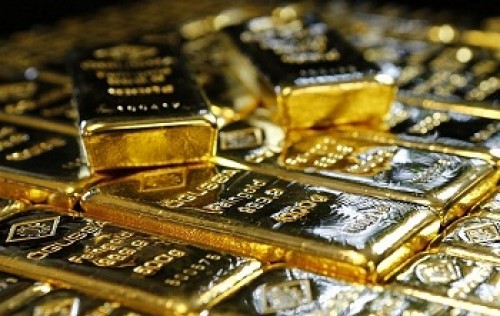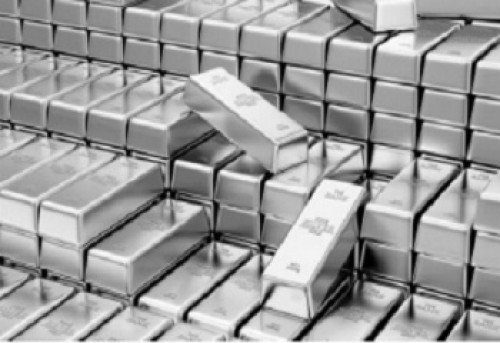Monthly Gold Outlook : August 2021 by Chirag Mehta, Quantum Mutual Fund

Follow us Now on Telegram ! Get daily 10 - 12 important updates on Business, Finance and Investment. Join our Telegram Channel
Below are Views On Monthly Gold Outlook – August 2021 by Chirag Mehta - Senior Fund Manager - Alternative Investments, Quantum AMC
After a flash crash to $1720 levels at the start of the month triggered by positive economic data from the US, international gold prices settled above $1800 by the end of August with 0% gains for the month powered by a dovish Powell, geopolitical risks and covid concerns. However, the rupee sharply appreciated on the back of foreign fund inflows and the absence of the RBI’s intervention, INR gold prices thus moved lower by 2% in the month.
The dollar strengthened due to the strong US jobs report for July that increased bets that the Fed could tighten policy earlier than expected. The report said non-farm payrolls rose by much higher than expected 943,000 and the unemployment rate fell to 5.4% from 5.9% in June. As a result, gold prices fell sharply. Post this setback, prices inched up through the rest of the month on concerns of rising Delta variant infections in the US and elsewhere.
The Chairman of Federal Reserve’s comments at the highly anticipated Jackson Hole Symposium were perceived as dovish, relative to market positioning as he kicked the policy-tightening can further down the road. Powell said the central bank could cut down bond purchases by the end of this year, which was a bit slower than markets had expected post the jobs report. He made it clear that the start of tapering would not signal higher rates, as rate increases would require the economy to cover more ground. Powell acknowledged the progress in the jobs market but noted that the Delta variant could derail this improvement and that there is substantial slack remaining in the labor market. He also said he wanted to avoid an ill-timed policy move based on temporary price pressures.
Expectations of the Fed maintaining its ultra-accommodative monetary policy support for longer cheered risk assets with equities, commodities, cryptocurrencies rallying. Among the risk-off assets, the dollar fell as market participants priced in a prolonged tightening. Gold, on the other hand, strengthened as Powell’s speech mentioned no immediate tapering, an awareness of the pandemic-related risks to the economy, and an assurance that rate hikes are not related to tapering and that they will be introduced much later. Lower interest rates reduce the opportunity cost of holding gold, and thus positively impact its demand.
It is clear now that the Fed is prioritizing job creation over inflation. With millions of jobs yet to be filled to get employment to pre-pandemic levels, the Fed’s intended labour market recovery has some time to go. Concerns about the economy overheating have thus increased with Powell remaining dovish even as inflation numbers continue to go up. The US Consumer Price Index for July came in at a 13-year high of 5.4% YoY. The delay in tightening is laying the ground for higher inflation, which is beneficial for gold.
China’s economic recovery seems to be losing steam with the latest virus outbreak disrupting things. Economic indicators retreated more quickly than expected in August, adding stress to the already plateauing economic recovery. Concerns about slowing growth are not limited to China. Goldman Sachs has lowered US economic growth estimates to 5.5% from 9% for the third quarter due to the impact of the Delta variant. US consumer confidence fell to a six-month low in August as rising infections and inflation raised concerns about the economic outlook. The latest data shows Australia's economy was already slowing in the June quarter before the current coronavirus lockdowns came into effect, raising concerns about the economic impact of ongoing restrictions in this quarter. The recovery in global trade too is beginning to slow due to virus outbreaks and lockdowns in manufacturing centres like Taiwan and China and port closures in Australia and Japan. The question now is will policymakers consider providing further monetary and fiscal stimulus to keep the global economy from slowing down for the rest of the year.
The flare-up in Afghanistan did not really impact gold prices. The Federal Reserve’s policy remained the dominant driver of price action. But the US's clumsy withdrawal from the country could have a longerterm impact on the US dollar and thus a positive impact on gold as it hurts US credibility and its role as a global superpower, which would only add to a growing list of structural headwinds for the dollar.
While local demand was down earlier this year due to the second wave of Covid-19, an uptick in imports shows gold demand may be starting to pick up. Domestic demand is set to rebound on lower prices, the festive season starting in September, and weddings pushed to this year from 2020. This should keep domestic gold prices well supported.
Investors should maintain 10-15% allocation to the asset class as a diversification to many of the global problems that continue to persist and as a long-term store of value against a potential inflationary threat.
To Read Complete Report & Disclaimer Click Here
Above views are of the author and not of the website kindly read disclaimer










Tag News

Navigating the Markets changing landscape -Quantum Mutual Fund holds Path to Partnership for...
More News

Quote and Outlook on Gold By Mr. Abhishek Bansal, Abans Group












